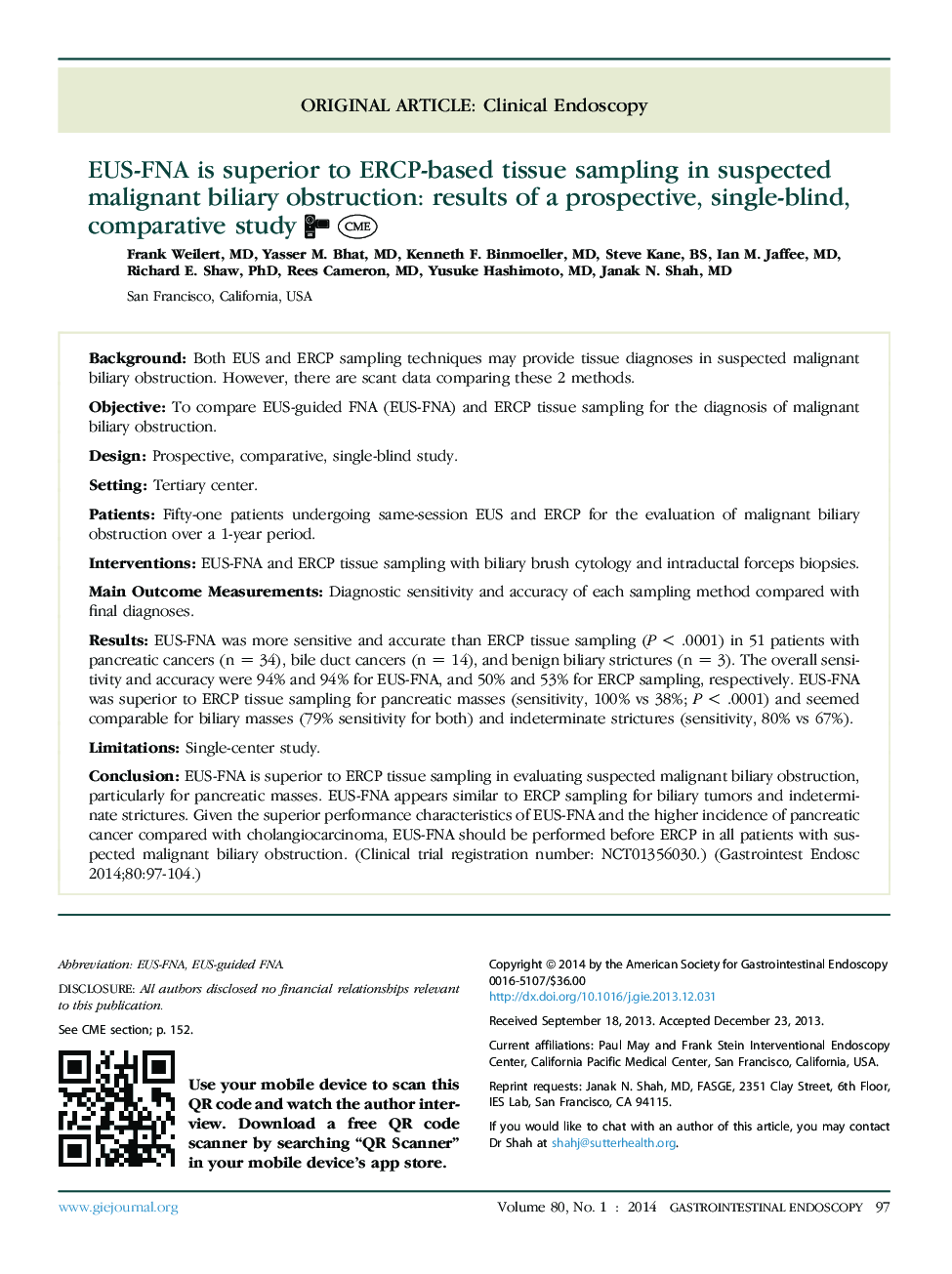| Article ID | Journal | Published Year | Pages | File Type |
|---|---|---|---|---|
| 3303073 | Gastrointestinal Endoscopy | 2014 | 8 Pages |
BackgroundBoth EUS and ERCP sampling techniques may provide tissue diagnoses in suspected malignant biliary obstruction. However, there are scant data comparing these 2 methods.ObjectiveTo compare EUS-guided FNA (EUS-FNA) and ERCP tissue sampling for the diagnosis of malignant biliary obstruction.DesignProspective, comparative, single-blind study.SettingTertiary center.PatientsFifty-one patients undergoing same-session EUS and ERCP for the evaluation of malignant biliary obstruction over a 1-year period.InterventionsEUS-FNA and ERCP tissue sampling with biliary brush cytology and intraductal forceps biopsies.Main Outcome MeasurementsDiagnostic sensitivity and accuracy of each sampling method compared with final diagnoses.ResultsEUS-FNA was more sensitive and accurate than ERCP tissue sampling (P < .0001) in 51 patients with pancreatic cancers (n = 34), bile duct cancers (n = 14), and benign biliary strictures (n = 3). The overall sensitivity and accuracy were 94% and 94% for EUS-FNA, and 50% and 53% for ERCP sampling, respectively. EUS-FNA was superior to ERCP tissue sampling for pancreatic masses (sensitivity, 100% vs 38%; P < .0001) and seemed comparable for biliary masses (79% sensitivity for both) and indeterminate strictures (sensitivity, 80% vs 67%).LimitationsSingle-center study.ConclusionEUS-FNA is superior to ERCP tissue sampling in evaluating suspected malignant biliary obstruction, particularly for pancreatic masses. EUS-FNA appears similar to ERCP sampling for biliary tumors and indeterminate strictures. Given the superior performance characteristics of EUS-FNA and the higher incidence of pancreatic cancer compared with cholangiocarcinoma, EUS-FNA should be performed before ERCP in all patients with suspected malignant biliary obstruction. (Clinical trial registration number: NCT01356030.)
